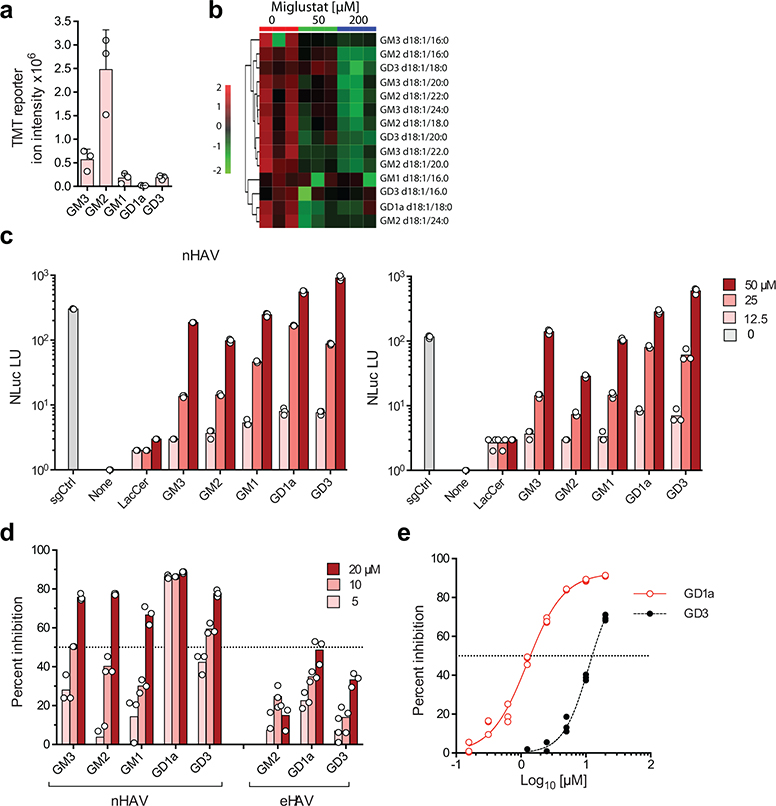Figure 2.
Gangliosides are essential for nHAV and eHAV entry in Huh-7.5 cells. a. Relative abundance of ganglioside classes in uninfected Huh-7.5 cells determined by ESI-MS. Data shown are mean TMT reporter intensities from 3 biologically independent samples ± s.d. b. Heat map showing the impact of miglustat treatment on abundance of ganglioside species in 3 independent Huh-7.5 cell cultures. c. Rescue of 18f-NLuc replication in UGCG-KO2.1 cells infected with gradient-purified (left) nHAV or (right) eHAV. Cells were cultured in media supplemented with 0–50 μM ganglioside for 24 hrs prior to virus challenge. NLuc activity was measured at 18 hpi. NLuc expressed by sgCtrl cells infected in parallel without ganglioside supplementation is shown for comparison. Data shown are means from n=3 technical replicates from representative experiments. d. Ganglioside inhibition of 18f-Nluc nHAV and eHAV infections. Virus was pre-incubated with gangliosides for 1 hr prior to inoculating Huh-7.5 cells; cells were harvested 6 (nHAV) or 16 hrs (eHAV) later for NLuc assay. Data shown are means from n=3 technical replicates from representative experiments. e. Dose-response analysis of ganglioside inhibition of 18f-Nluc nHAV infection. IC50 of GD1a (1.25 μM) and GD3 (11.1 μM) were estimated by fitting data to a 4-parameter, variable slope model (see Supplementary Table 1). n=3 technical replicates.

